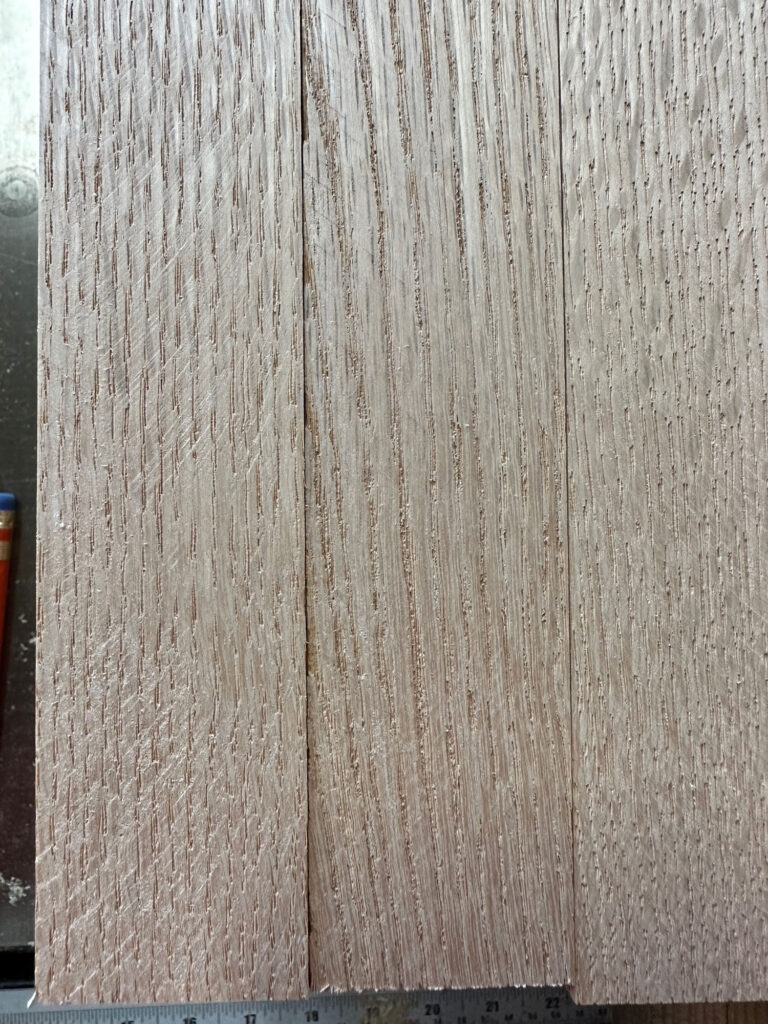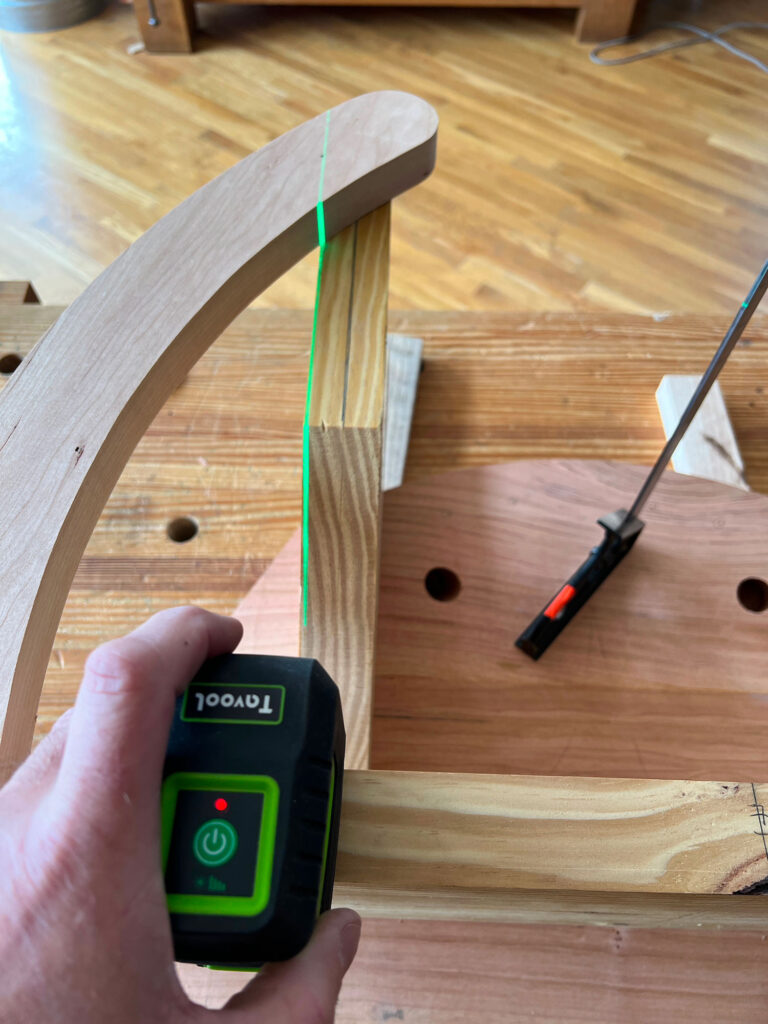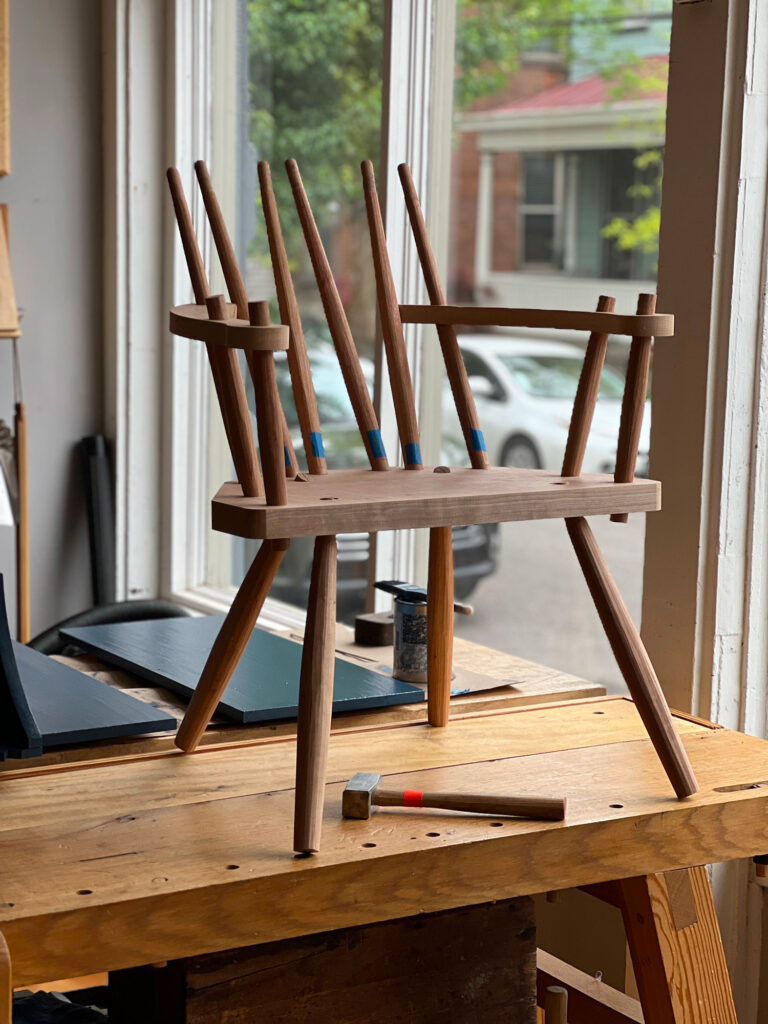
I keep telling myself that modern spade bits are not great, but they’re OK. But I am lying to myself. Anytime I use a NOS (New Old Stock) Irwin spade I am shocked by how good the old ones are compared to the modern stuff.
During the last few chairmaking classes I taught, the modern spade bits could barely make it through one chair before becoming useless. And the cutting geometry was so poor that you had to push with all your might to get them to bite.
So until I find a good (I’d settle for decent) brand of spade bit, I’m looking elsewhere.
Last week I tried the 5/8” Trident bit from BB Custom Tools. I paired it with the BB Custom Drill Extension (6” or 10” works for stick chairs) and the Stick Chair Spindle Bushing. It’s an expensive rig, especially compared to a $12 spade bit (16” long).
But here’s the deal: The bit is resharpenable ($8 to $14 for the job), and it cuts with far less effort than a spade. The Trident comes insanely sharp and plowed through all the mortises for four stick chairs without complaint. And it was still razor sharp at the end.

There is a little more fussing around when drilling the mortises through the arm and seat with the Drill Extension. You have to detach the bit and extension to drill the mortise in the seat. But after drilling mortises for one chair (that’s 26 mortises), it became an intuitive operation. So the plusses way outweigh the minuses.
The biggest surprise with the equipment was the little plastic Stick Chair Bushing. It centers the bit in the mortise through the arm. I laughed when I saw it. “Yea right, I’m not using that.”
I fricking love it, and it will reduce errors with students.
Speaking of students, I’m going to switch over to this drilling system for classes. I’m tired of watching students struggle with sub-par spade bits. And I’m tired of smelling the smoking wood as some of the spades have to practically burn their way through the wood after four or five holes.
I am happy to recommend this gear for all makers of stick chairs. I only wish we had a manufacturer of spade bits that did as good a job as BB Custom Tools. Nice work, Kyle and Patrick.
— Christopher Schwarz

















